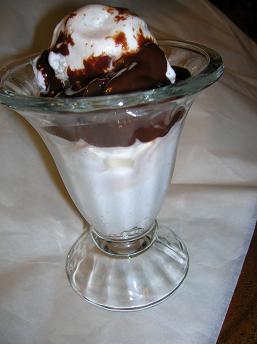Our spring season1 this year has been a cool, rainy and stormy one, so I was pleased a day or two ago to see the first ripening2 of our strawberries3 in the back yard. It is about two weeks later than usual, but that is also true for the rest of the plants. We planted some vegetables in the garden about a month ago, but while that was later than usual, it was actually the first time this spring that the soil4 was dry enough to plow5, and dry enough to plant typical vegetables6 (peppers7, beans, zucchini squash8, radishes9, and tomatoes.)
While I like seeing other plants develop in the spring - what could be prettier than the various shades of green10 as trees begin to form buds, then leaves and blossoms on the fruit trees - I long ago decided that strawberries are my favorite plants to watch develop following winter11. Because of the severe winter in this part of the U.S. it is necessary to place a protective layer12 of straw or leaves over the dark green mature13 plants.
When one begins to see the bright green plants poke14 their heads through their winter bedding15, it is a sure sign of spring arriving. As spring advances16, one next sees the strawberry leaves turn dark green, and within a month or so, the beautiful white blossoms17 appear like a dusting of snow18 on the green plants. Flowers give rise to19 the strawberry fruits - actually the fruits are small seeds embedded20 in the receptacle21, the base of the flower - so this is a multiple berry22 fruit. The receptacle tissue enlarges and becomes white to light yellow within another week, and finally the brilliant red23 color replaces the lighter hues24 to form the nearly conical25 strawberry with the lighter color seeds imbedded20 in the receptacle.
This year we had lots of moisture26, and the berries are larger than usual, and the taste is milder and sweeter than usual. From my youth I remember this as one of the truly most delightful tastes27 of any food. If one takes a ripe berry directly from the plant, places it in the mouth, and slowly chews28 the berry, there is that delightful fruity taste which is accompanied by the fresh scent29 which is detected immediately in the nose. Maybe it is just because the strawberry is one of the earliest of berries found in the year, and while I like berries of almost any sort, none has a more delicate30 taste to me than a strawberry.
One can eat strawberries in a number of ways and enjoy them. I think one of the best ways, other than eating them fresh31, is to make strawberry shortcake32 by placing spoonfuls of fresh strawberries over a small, flat cake, and perhaps topping this with a bit of whipped cream33, or ice cream. This is as much a rite of spring34 as the first robin35 appearing in the yard!
Some people prefer fresh strawberries with cream, or strawberries on waffles36 with syrup, strawberries in jam or jelly, etc. I also like strawberry pies, but when I was very young, I learned that strawberries on peanut butter and bread was a delicious treat37. I still like to try that each spring!
Yes, I like nearly all types of berries, but strawberries certainly rank38 very high, along with love’s first kiss, as something to be remembered for life. (575 words)
Notes:
1. spring season: April to June in northern U.S. areas (春季,美国北部为四至六月).
2. ripening: 成熟
3. strawberries: 草莓
4. soil: 土壤,泥土
5. plow: turn over the earth so that seeds can be planted (耕地,翻土).
6. typical vegetables: common vegetables grown in the Midwest (有代表性的蔬菜).
7. peppers: 圆椒
8. zucchini (squash): 密生西葫芦
9. radishes: 小萝卜
10. various shades of green: different degrees of green from light to dark, etc. (不同深浅度的绿色).
11. strawberries are my favorite plants to watch develop following winter: 草莓是冬季过后我最喜欢观察其成长的植物。句中to watch develop 等于 to watch them develop,因此可以说这里省略了作为宾语的 plants。
12. protective layer: a covering of insulating material such as straw or leaves to prevent damage during the severe winter weather (保护层,用草、叶子铺成,避免在严冬中冻坏).
13. mature: of a fully developed stage of growth (成熟期的).
14. poke: push up through the covering layer of straw or leaves (露出,伸出).
15. winter bedding:(有保护层的)冬季花坛
16. as spring advances: as the spring develops seasonally (随着春天的脚步不断向前).
17. blossoms: the flowers of a plant (植物的花).
18. a dusting of snow: a light covering of snow (一层薄薄的雪).
19. give rise to: be the reason why something happens (引起,导致).
20. embedded (imbedded): put something firmly and deeply into something else (嵌入,插入).
21. receptacle: the base of the flowering stem to which the other parts of the flower are attached (花托).
22. multiple berry: a fruit in which many berry seeds are formed within or on the fleshy receptacle tissue (多籽莓). Other fruits of this type include blackberries, raspberries, and mulberries.
23. brilliant red color: bright, shining red color (艳红色).
24. the lighter hues: 各种浅(红)色
25. conical: cone-shaped with greater width at the base and narrowing to the top (锥形的).
26. moisture:(土壤)潮湿
27. tastes: 味道
28. chew: 嚼
29. scent: odor or smell detected by the nose (气味).
30. delicate: very subtle, not overwhelming, pleasant and not strong (淡雅的,清淡的).
31. other than eating them fresh: 除了吃新鲜的以外
32. strawberry shortcake: cake over which strawberries are poured and often with whipped cream or ice cream on top (草莓奶油酥饼,草莓冰淇淋酥饼). This is a very popular springtime dessert.
33.whipped cream: heavy rich cream which is beaten by a fork or mixer until it thickens because of air combined within the cream (掼奶油).
34. rite of spring: a ritual or event which repeats each year (春天的典礼、仪式).
35. first robin: the first sighting of a robin, a bird often associated with the arrival of spring (看到的第一只鸫,常与春天的到来连在一起).
36. waffles: 烘饼,华夫饼
37. treat: something that is very special to eat; not an ordinary food item (非常好吃的东西).
38. rank: be placed or rated in a definite order from top to bottom (具有……等级).








